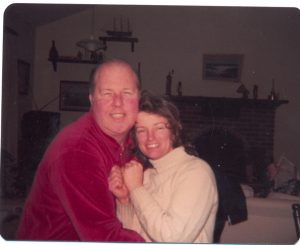
This is a picture of my Mom and Dad from 1981. Gone but not forgotten. Thinking of them both this Father’s Day 2018.
(C) 2018 by John F. McGowan, Ph.D.

Solving practical problems with mathematics
I Won Best Table Topics and Best Evaluator at Early Risers Toastmasters in Palo Alto, CA on June 5, 2018. Yahoo! Especially Table Topics! I win Best Evaluator frequently but am not as good at Table Topics.

(C) 2018 by John F. McGowan, Ph.D.
About Me
John F. McGowan, Ph.D. solves problems using mathematics and mathematical software, including developing gesture recognition for touch devices, video compression and speech recognition technologies. He has extensive experience developing software in C, C++, MATLAB, Python, Visual Basic and many other programming languages. He has been a Visiting Scholar at HP Labs developing computer vision algorithms and software for mobile devices. He has worked as a contractor at NASA Ames Research Center involved in the research and development of image and video processing algorithms and technology. He has published articles on the origin and evolution of life, the exploration of Mars (anticipating the discovery of methane on Mars), and cheap access to space. He has a Ph.D. in physics from the University of Illinois at Urbana-Champaign and a B.S. in physics from the California Institute of Technology (Caltech).
I won Best Speaker at Early Risers Toastmasters in Palo Alto with my satirical presentation “Leadership Secrets of Steve Jobs”
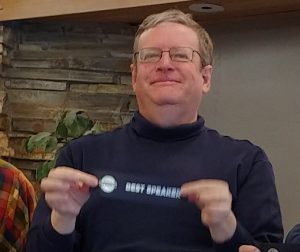
(C) 2018 by John F. McGowan, Ph.D.
About Me
John F. McGowan, Ph.D. solves problems using mathematics and mathematical software, including developing gesture recognition for touch devices, video compression and speech recognition technologies. He has extensive experience developing software in C, C++, MATLAB, Python, Visual Basic and many other programming languages. He has been a Visiting Scholar at HP Labs developing computer vision algorithms and software for mobile devices. He has worked as a contractor at NASA Ames Research Center involved in the research and development of image and video processing algorithms and technology. He has published articles on the origin and evolution of life, the exploration of Mars (anticipating the discovery of methane on Mars), and cheap access to space. He has a Ph.D. in physics from the University of Illinois at Urbana-Champaign and a B.S. in physics from the California Institute of Technology (Caltech).
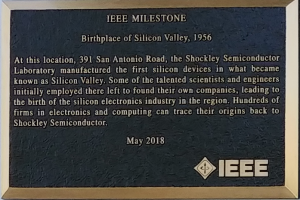
A new memorial was just completed at 391 San Antonio Road in Mountain View, California where Shockley Semiconductor had its first office/lab. This replaces an old dinky street sign with giant mock transistors, a large memorial plaque and 391 in man-sized numbers, all facing San Antonio Road.
Today Mountain View, where I live, is best known as the home of Google. It has however a long history in the Silicon Valley, notably as the original home of William Shockley’s Shockley Semiconductor, progenitor of the early Silicon Valley semiconductor companies. Both Robert Noyce and Gordon Moore of Intel worked for Shockley and left to found first Fairchild Semiconductor and then Intel after disputes with the Nobel prize-winning inventor of the transistor.
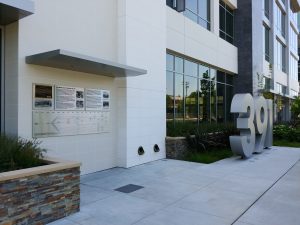
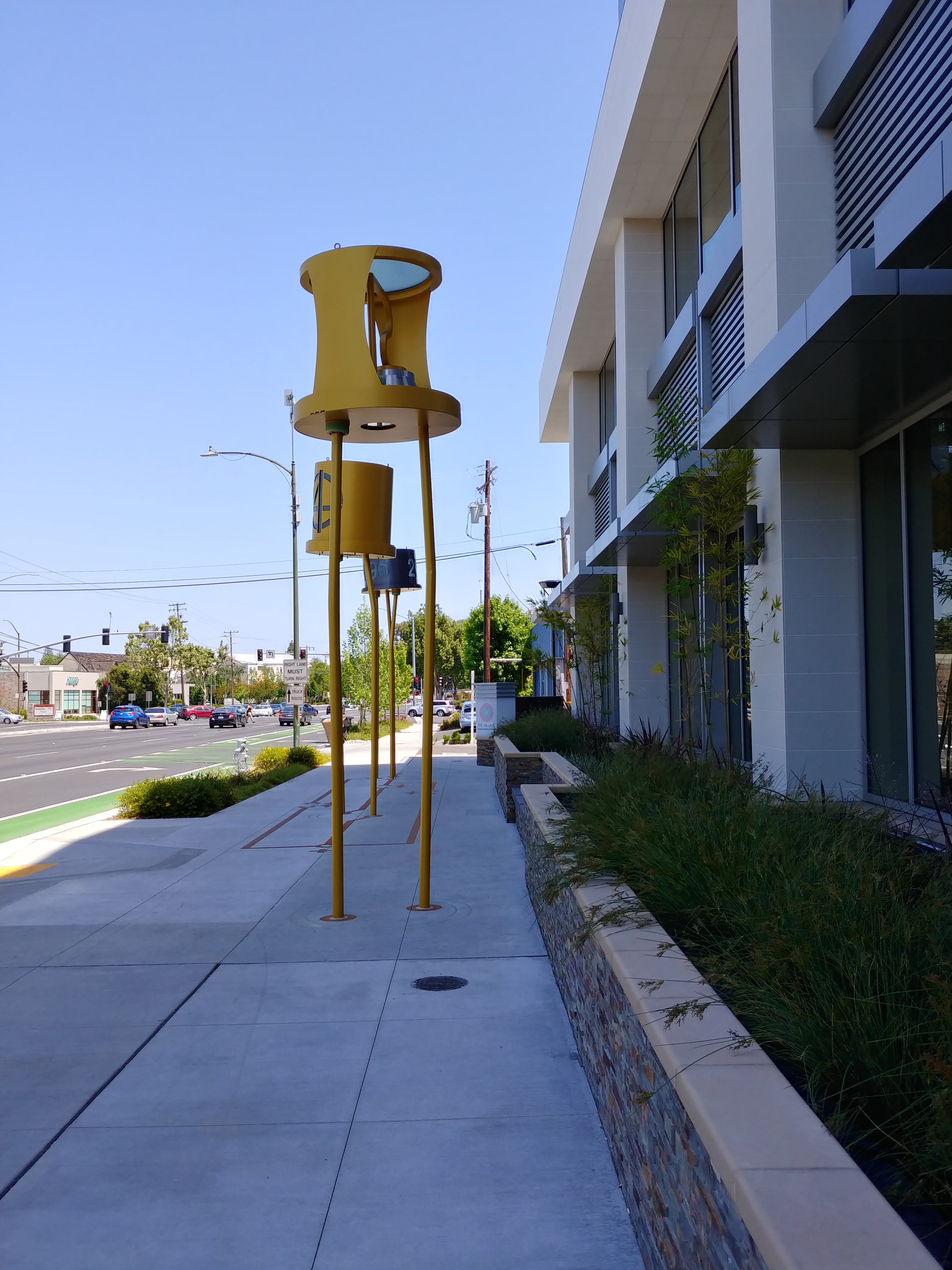
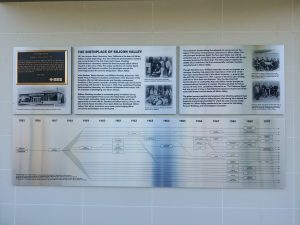
If you are in Mountain View, California, take a few minutes to visit 391 San Antonio Road.
About Me
John F. McGowan, Ph.D. solves problems using mathematics and mathematical software, including developing gesture recognition for touch devices, video compression and speech recognition technologies. He has extensive experience developing software in C, C++, MATLAB, Python, Visual Basic and many other programming languages. He has been a Visiting Scholar at HP Labs developing computer vision algorithms and software for mobile devices. He has worked as a contractor at NASA Ames Research Center involved in the research and development of image and video processing algorithms and technology. He has published articles on the origin and evolution of life, the exploration of Mars (anticipating the discovery of methane on Mars), and cheap access to space. He has a Ph.D. in physics from the University of Illinois at Urbana-Champaign and a B.S. in physics from the California Institute of Technology (Caltech).
I received the results of the arbitration for my mysterious automobile accident. According to USAA, my insurance company, the other driver also claimed to have had a green light. The arbitration appears to have split the fault down the middle:
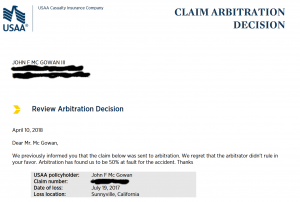
This again raises the possibility that the light was green in both directions, for both drivers, whether due to a malfunction or tampering with the light. It is an intersection with multiple lights in each direction so both drivers should have been able to see the lights clearly. A prudent driver coming from the other driver’s direction would not have run the light intentionally since I was hidden behind a building. It is not possible to tell it is “safe” to run the light. Similarly, because of the divider which has many trees, I could not see the other driver approaching. A prudent driver in my position also would not make a decision to run the light.
My recollection is that I came to a full stop at a red light, waited until it changed, and made my left turn and was very surprised to see an oncoming car. Perhaps the other driver was confused or distracted, but it is definitely possible that they also had a green light. Modern traffic lights are complex computerized, networked devices. Such devices can have weird software glitches. They can also be hacked into.
About Me
John F. McGowan, Ph.D. solves problems using mathematics and mathematical software, including developing gesture recognition for touch devices, video compression and speech recognition technologies. He has extensive experience developing software in C, C++, MATLAB, Python, Visual Basic and many other programming languages. He has been a Visiting Scholar at HP Labs developing computer vision algorithms and software for mobile devices. He has worked as a contractor at NASA Ames Research Center involved in the research and development of image and video processing algorithms and technology. He has published articles on the origin and evolution of life, the exploration of Mars (anticipating the discovery of methane on Mars), and cheap access to space. He has a Ph.D. in physics from the University of Illinois at Urbana-Champaign and a B.S. in physics from the California Institute of Technology (Caltech).
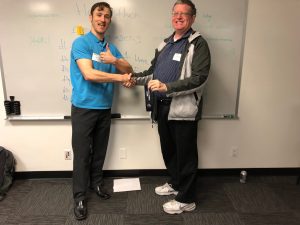
I won the Best Table Topics award at Startup Speakers Toastmasters on Wednesday, March 14, 2018. The picture shows me receiving the Best Table Topics award from Club President Charles Hall. I am continuing to make progress in impromptu speaking! 🙂
I answered a question about early retirement.
About Me
John F. McGowan, Ph.D. solves problems using mathematics and mathematical software, including developing gesture recognition for touch devices, video compression and speech recognition technologies. He has extensive experience developing software in C, C++, MATLAB, Python, Visual Basic and many other programming languages. He has been a Visiting Scholar at HP Labs developing computer vision algorithms and software for mobile devices. He has worked as a contractor at NASA Ames Research Center involved in the research and development of image and video processing algorithms and technology. He has published articles on the origin and evolution of life, the exploration of Mars (anticipating the discovery of methane on Mars), and cheap access to space. He has a Ph.D. in physics from the University of Illinois at Urbana-Champaign and a B.S. in physics from the California Institute of Technology (Caltech).
According to my insurance company, my mysterious automobile accident has been referred to arbitration since the other driver also claims to have had a green light. This again raises the unsettling possibility that the light was green in both directions either due to some rare, mysterious malfunction or — worse — due to tampering or hacking of the traffic light. This latter possibility could have been a bizarre “prank” or targeted specifically at the other driver or me.
Modern traffic lights are complex computerized devices often with network connections. Just like personal computers and smartphones, such devices can experience rare, difficult to reproduce “glitches.” Just like personal computers and smartphones they can be attacked successfully by hackers and other malefactors.
(C) 2018 by John F. McGowan, Ph.D.
About Me
John F. McGowan, Ph.D. solves problems using mathematics and mathematical software, including developing gesture recognition for touch devices, video compression and speech recognition technologies. He has extensive experience developing software in C, C++, MATLAB, Python, Visual Basic and many other programming languages. He has been a Visiting Scholar at HP Labs developing computer vision algorithms and software for mobile devices. He has worked as a contractor at NASA Ames Research Center involved in the research and development of image and video processing algorithms and technology. He has published articles on the origin and evolution of life, the exploration of Mars (anticipating the discovery of methane on Mars), and cheap access to space. He has a Ph.D. in physics from the University of Illinois at Urbana-Champaign and a B.S. in physics from the California Institute of Technology (Caltech).
One of the many stressful, error-prone inconveniences of modern air travel is identifying and correctly retrieving your checked luggage from among often hundreds of other remarkably similar looking bags. Worst case, in a distracted hurry, you incorrectly take someone else’s luggage and never recover your own luggage! 🙁
The cause of this problem is that most luggage today looks quite similar. Most bags are a dark gray or black color with rollers on one end and an extensible handle on the other end. The printed tags provided by the airlines are remarkably similar, featuring unreadable bar codes and numbers.
Most tags with your name and address that you can buy at convenience stores or other locations are small and frequently gray or black as well, looking at a distance like every other tag on every other bag.
Consequently, it is frequently impossible to identify your luggage until it is right on top of you, about to go by on the carousel. You may have to run after it or wait until it comes around again even if you can identify it. This is often stressful and frustrating after a long trip, especially on top of other mishaps or delays.
While I have never ended up with someone else’s bags, it is easy to see how a distracted traveler could fail to check the tag and leave the airport with someone else’s luggage, worst case never recovering their own luggage.
Here is my solution:
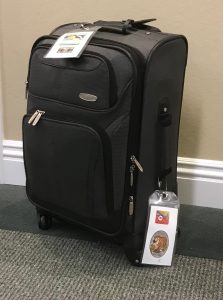
Historically, travelers solved this problem by putting labels or stickers, often provided by hotels or other travel related firms, on their luggage which was typically a hard surface. Modern luggage like mine is often canvas or some other soft flexible material. Stickers such as those now widely used to personalize laptops won’t stick properly to soft luggage.
However, one can use large cruise tags used for personalizing and tracking luggage on cruise ships (cruise tags are available through Amazon and other sources) to hold appropriately sized pieces of paper or cardboard with colorful distinctive stickers affixed to the paper or cardboard:
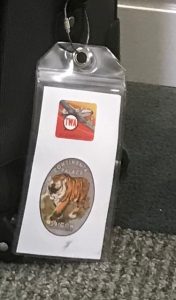
Here I used stickers derived from vintage luggage labels from the 1930’s and 1940’s. Books of stickers are available from Amazon and many other sources.
A cruise tag is a transparent flat pouch that can hold an identifying tag of your choosing or design. It is easy to cut a piece of paper or cardboard that fits within the pouch and mount stickers on the piece of paper or cardboard as shown.
Obviously, if you choose to follow my example, you should select your own stickers that reflect your personal identity and style, just as you would for a laptop.
Select a pattern of bright colors that is easily identifiable at a few dozen feet (roughly ten meters) — the typical size of a baggage carousel at an airport. As the bag approaches it will be easy to confirm your identification as the sticker becomes fully readable and retrieve your bag easily before it rushes past you.
Finally, yes I successfully used this DIY (do-it-yourself) solution to the checked bag retrieval problem on my latest trip across the United States. 🙂
(C) 2017 John F. McGowan, Ph.D.
John F. McGowan, Ph.D. solves problems using mathematics and mathematical software, including developing gesture recognition for touch devices, video compression and speech recognition technologies. He has extensive experience developing software in C, C++, MATLAB, Python, Visual Basic and many other programming languages. He has been a Visiting Scholar at HP Labs developing computer vision algorithms and software for mobile devices. He has worked as a contractor at NASA Ames Research Center involved in the research and development of image and video processing algorithms and technology. He has published articles on the origin and evolution of life, the exploration of Mars (anticipating the discovery of methane on Mars), and cheap access to space. He has a Ph.D. in physics from the University of Illinois at Urbana-Champaign and a B.S. in physics from the California Institute of Technology (Caltech).

This is a picture of the Chapel of the Holy Cross in Sedona, Arizona taken from the access road after my visit today. There are spectacular views of the region from the parking lot and both inside and outside the chapel when you get to the top. There is a Wikipedia page on the Chapel with more details including the history of the unusual structure.
(C) 2017 John F. McGowan, Ph.D.
John F. McGowan, Ph.D. solves problems using mathematics and mathematical software, including developing gesture recognition for touch devices, video compression and speech recognition technologies. He has extensive experience developing software in C, C++, MATLAB, Python, Visual Basic and many other programming languages. He has been a Visiting Scholar at HP Labs developing computer vision algorithms and software for mobile devices. He has worked as a contractor at NASA Ames Research Center involved in the research and development of image and video processing algorithms and technology. He has published articles on the origin and evolution of life, the exploration of Mars (anticipating the discovery of methane on Mars), and cheap access to space. He has a Ph.D. in physics from the University of Illinois at Urbana-Champaign and a B.S. in physics from the California Institute of Technology (Caltech).